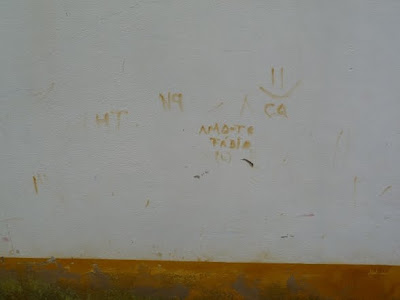From Obidos we drove on the 40 miles or so to Lisbon, a hilly city of 2-3 million, and found the municipal campground, Camping Lisboa, on the northern side, with relative ease. Electricity, water, warmth, security, a beautiful site in the city park--very much like Paris' Bois de Bulogne, but a much nicer campground--all for $26 a night. We'll take it. About a dozen other RVers were there too.
It was Christmas Eve, and all our thoughts and activities turned to family and friends and to our assorted Christmas rites and rituals...reminiscing about last year at Whakapapa, North Island (on the slopes of Mt. Doom), decorating the Sherouse family Christmas tree, listening to Christmas music, the traditional cheese fondue,
Christmas Vacation, exchange of (modest, travel-related) gifts, viewing of
Christmas Story, lazing around and enjoying a rainy day-off. And, best of all, phone calls to Rachel and Rebecca, Marie and Carole.
We very much missed family and friends for this second Christmas apart--next year we are definitely coming home--but trust everyone had a wonderful holiday. Ours was, again, most memorable.
 |
For this year's Christmas tree, we went
natural/live; there was little else to choose
from; the lights we saved from New
Zealand last year!
|
 |
While Vicki fixed the cheese fondue--with real French and
Swiss cheese and German Kirchwasser, etc.--we watched
the fire in the old video-hearth (thanks, Gloria) and sang
along with all the Christmas music
|
 |
Battery-powered candle-light fondue dinner
|
 |
Christmas dinner the next day--roast chicken and a Medoc
wine
|
 |
Dessert...British Christmas pudding with
grand marnier cream sauce; and Ginja
cherry liqueur from Obidos, in chocolate
cups; quite an international feast
|
 |
We had been looking for lime jello throughout France,
Spain and Portugal, but had to settle for a Tutti-Fruitti-
flavored "green slime," still good
|



















































